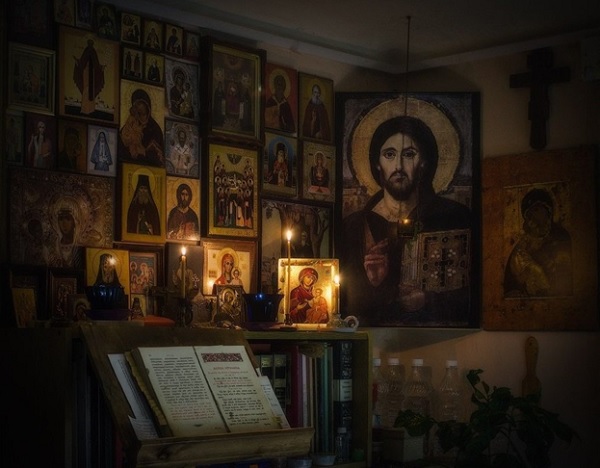Sanctity as fruit of the Holy Spirit
24 June 2022The Church has placed the feast of All Saints after the great feast of Pentecost and, naturally, this is not by chance. In other words, apart from the daily commemoration of saints on the anniversary of their departure from this earthly life, the god-bearing Fathers also ordained that they all be celebrated together, whether they’re known to us and acknowledged as saints or whether they’re unknown people who have pleased God. It may be that at some point in the future, they’ll be made known to us.
The aim and purpose of all those who come into the world is their salvation, that is, citizenship in the ‘Kingdom of Heaven’. If we want to be saved/redeemed, then, the only safe and sure way is that which Christ himself showed us in practice through his life. We ought to do in our life what Christ did, and then meaning will be given to the words of Pontius Pilate when he presented to the Jewish people Jesus Christ, wearing a crown of thorns and robed in a Roman, military, purple cloak, just before he was condemned to the cross: ‘Behold the man…’ (Jn. 19, 5).

When we say we should imitate Christ, we don’t mean we should ‘parrot’ or mimic his actions literally (as, for example they do in the Philippines, where some people are actually crucified on Good Friday). We mean that we should tread in his footsteps. This is what is called in dogmatics ‘imitation of the Christological ethos’, since Christ did specific things and granted us salvation so that we’d have eternal life.
But we can’t do what Christ did unless we have the Holy Spirit in our life; unless we’re receptive to the grace of the Holy Spirit. The bread and wine are transformed into the body and blood of Christ, not by simple repetition of the words of Christ when, at the Last Supper, he instituted the sacrament of the Divine Liturgy, but when we go on to the epiclesis and the sanctification of the precious gifts through the descent of the Holy Spirit. Naturally, this is also true of the other sacraments of the Church (Baptism, Chrismation, Marriage, Ordination, Holy Unction, the inauguration of a new church, and so on) because the Holy Spirit is the preeminent spirit of the celebration of rites, who transforms and sanctifies the faithful and the whole of creation. Of course, the other persons of the Holy Trinity also act, since everything is done ‘From the Father, through the Son, in the Holy Spirit’.
So the basic fruit of the Holy Spirit is sanctity, the state ‘beyond nature’ which people acquire through the ‘good alteration’ within the Church, and also with an uncompromising Gospel ethic towards all other people, without exception, and with the companionship and confession of the Holy Spirit in the world. So, apart from the fruit, it’s also a criterion for the Church to produce saints and enter them in the Synaxari of the Church, like the stars which illumine the sky at night. For the life of the Church, they’re the luminaries of the whole world.
Finally, we might recall a basic truth concerning the art of iconography. In Orthodoxy, we always paint icons in two dimensions. The three dimensions of Euclidian geometry are height, breadth and depth: three-dimensional geometry. In Orthodoxy we paint icons in only two dimensions, height and breadth, without depth. The icon invites us to understand that what is depicted is deficient. But why? Because the depth is the believers themselves who stand before the icon and venerate it. An icon isn’t a museum piece nor a work of art. It’s an article which invites us to participate, through our veneration and prayer, in the events depicted. In this way, the Church presents us with the saints in order to show us our own prospects of becoming saints. And also because each saint is, in essence, Christ himself, closer in time to our own day and age. May we sinners also be sanctified. Amen.






